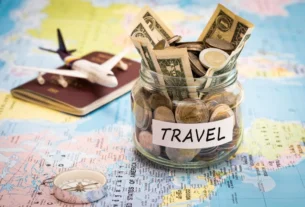Forget everything you know about vacation planning. The race to check off bucket list items, the frantic schedule-juggling between monuments, and the exhaustion that comes with “seeing it all” – there’s a better way to explore the world.
Slow travel isn’t just a trend; it’s a complete shift in how we experience places and connect with cultures. Rather than cramming fifteen destinations into a two-week trip, slow travelers spend weeks or months in a single location, peeling back layers to discover what guidebooks never tell you.
This approach transforms you from a tourist into a temporary local, creating memories that last decades instead of fading with your next Instagram story.
What Makes Slow Travel Different
The concept goes beyond simply extending your vacation days. Slow travel means choosing depth over breadth, quality over quantity. You might spend three weeks in a single neighborhood instead of three days in three different cities.
Sarah Chen, a photographer from Portland, discovered this accidentally when a flight cancellation stranded her in a small Portuguese town for an extra week. “I was furious at first,” she recalls. “But that extra time let me witness the town’s rhythm – morning coffee rituals, afternoon siestas, evening gatherings in the square. I learned more about Portuguese culture in those seven unplanned days than I had in the previous ten days of rushed sightseeing.”
Research from the Global Entry Tourism Organization shows that travelers who spend more than 14 days in a single destination report 73% higher satisfaction rates compared to those following traditional itineraries. They also spend 40% more on local businesses and form lasting relationships with residents.
The Hidden Benefits You Never Expected
Your Budget Breathes Easier
Counter-intuitively, staying longer often costs less per day. Weekly apartment rentals drop significantly compared to nightly hotel rates. Monthly public transport passes cost a fraction of daily tickets. Local markets become your grocery store instead of expensive tourist restaurants.
Marcus Rivera saved $2,100 on a month-long stay in Prague by renting an apartment instead of hotels and shopping at neighborhood markets. “I was eating better food, living more comfortably, and spending less than friends who did the typical European tour,” he explains.
Language Skills Emerge Naturally
Three days in Paris might teach you to order coffee. Three weeks lets you debate politics with your neighbor. Extended stays create pressure and opportunity to communicate beyond tourist phrases.
Dr. Elena Kowalski, a linguistics professor at Columbia University, studied language acquisition among travelers. Her findings show that stay durations over 21 days trigger a “immersion threshold” where travelers begin thinking in the local language, not just translating.
Stress Evaporates
Remember vacation stress – racing between airports, checking items off lists, constantly planning the next move? Slow travel eliminates this entirely. You wake up knowing where you are, where to buy coffee, which bus to take. This familiarity creates space for spontaneity and genuine relaxation.
Choosing Your Slow Travel Destination
Not every location suits slow travel equally. Consider these factors when selecting your base:
Size Matters (But Not How You Think)
Mid-sized cities often work better than capitals or tiny villages. Places like Lyon instead of Paris, Krakow instead of Warsaw, or Valparaíso instead of Santiago offer enough variety to sustain long stays without overwhelming options.
Neighborhood Character
Look for areas where locals actually live and work, not tourist districts. Residential neighborhoods with markets, cafes, parks, and shops create natural daily routines. The Gràcia district in Barcelona, Trastevere in Rome, or Hongdae in Seoul exemplify this balance.
Infrastructure Quality
Reliable internet, decent public transport, and basic services matter for extended stays. Research healthcare options, banking access, and whether your devices will work seamlessly.
Cultural Openness
Some destinations welcome long-term visitors more readily than others. Cities with significant expat communities, university populations, or digital nomad scenes often provide easier integration opportunities.
Practical Steps to Make It Happen
Accommodation Strategy
Start with short-term rentals (Airbnb, local equivalents) for the first month, then transition to monthly rentals or house-sitting arrangements. This approach lets you test neighborhoods before committing to longer leases.
Build relationships with property owners. Many offer significant discounts for extended stays, especially during off-peak seasons.
Work Considerations
Remote work makes slow travel accessible, but even traditional jobs might accommodate extended international assignments or sabbaticals. Some companies offer “workations” or temporary relocation programs.
Consider seasonal work opportunities – teaching English, working in tourism, or freelancing in your expertise area. These arrangements often include accommodation and provide deeper cultural integration.
Integration Techniques
Join local classes – language courses, cooking workshops, dance lessons, sports clubs. These provide structure, social connections, and cultural education simultaneously.
Volunteer with local organizations. Community gardens, animal shelters, environmental groups, or teaching programs offer meaningful ways to contribute while building relationships.
Adopt local rhythms. Shop at neighborhood markets, eat lunch when locals eat, observe weekend traditions. This creates authentic experiences impossible during short visits.
Common Obstacles and Solutions
Visa Limitations
Many countries allow 90-day tourist visits, perfect for slow travel experiments. For longer stays, investigate working holiday visas, student visas, or digital nomad programs increasingly offered by destinations seeking remote workers.
Social Isolation
Combat loneliness by joining expat communities, co-working spaces, or activity groups. Apps like Meetup, Bumble BFF, or local Facebook groups connect newcomers with established communities.
Decision Paralysis
Too many options can overwhelm. Set parameters: budget range, climate preferences, time zone considerations for work, and must-have amenities. These boundaries simplify decision-making.
Making Your First Slow Journey Happen
Start small. Choose a destination within your comfort zone for your first extended stay – perhaps somewhere you’ve visited before or speak the language. Build confidence before tackling more challenging locations.
Plan for the first week only. Book initial accommodation and research basic logistics, but leave room for discoveries and course corrections. Over-planning defeats slow travel’s spontaneous spirit.
Pack differently. Bring versatile clothing suitable for various occasions and seasons. Include items that make any space feel like home – favorite tea, familiar books, small comfort objects.
The Transformation You Didn’t Expect
Slow travel changes how you see not just the world, but your own life. Returning home after weeks abroad, many travelers report heightened appreciation for their own communities and renewed curiosity about overlooked local gems.
The skills developed abroad – adaptability, cultural sensitivity, problem-solving in unfamiliar environments – enhance daily life long after returning. Former slow travelers often become better listeners, more creative problem-solvers, and more confident navigators of change.
Perhaps most surprisingly, slow travel often reduces the urge for constant travel. Deep experiences in fewer places satisfy wanderlust more effectively than surface-level destination hopping. You return feeling truly enriched rather than simply entertained.
The world becomes smaller and larger simultaneously – smaller because human connections transcend cultural differences, larger because you understand how much complexity exists within any single place.
Your next trip doesn’t have to be another sprint through someone else’s must-see list. Choose one place, stay longer, and discover what happens when you stop rushing through the world and start living in it instead.


